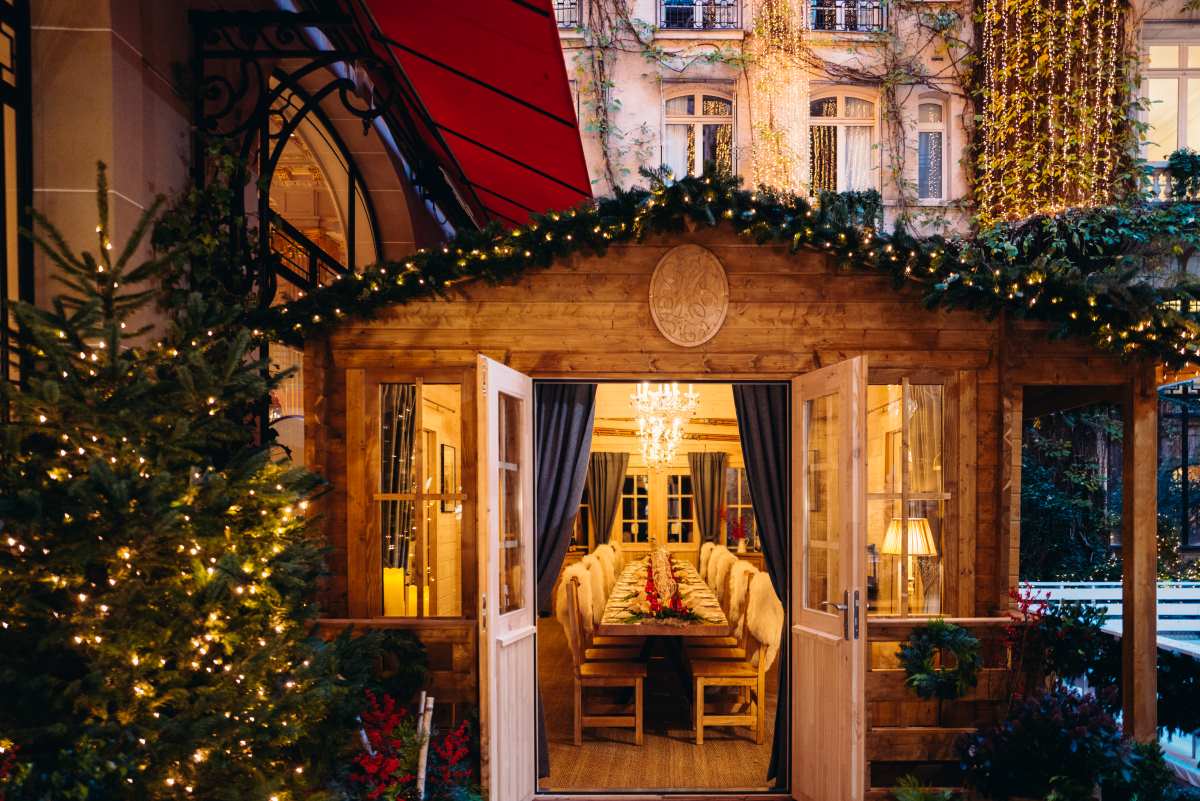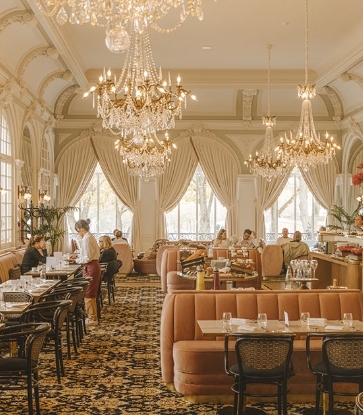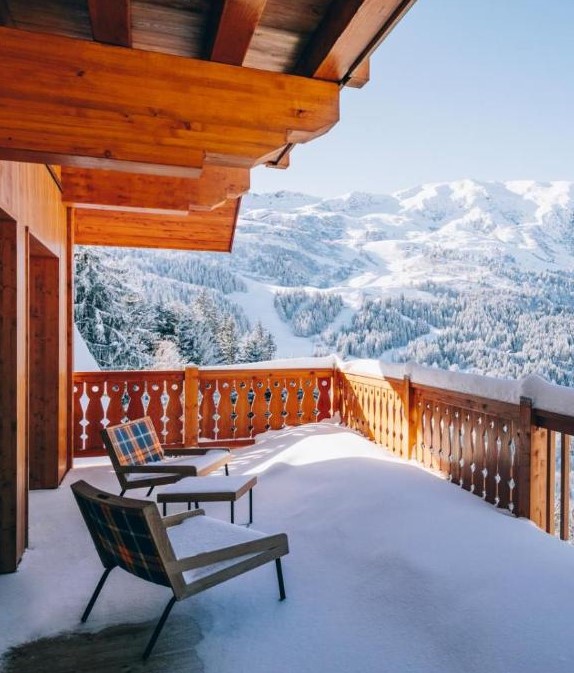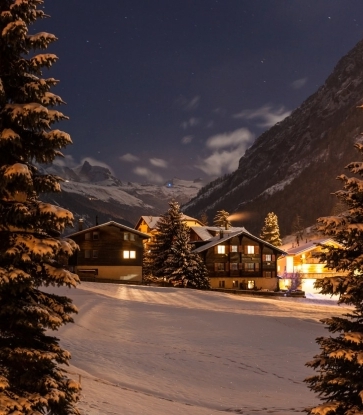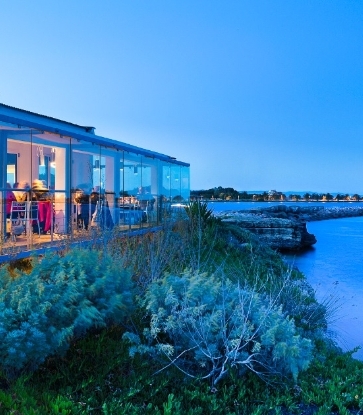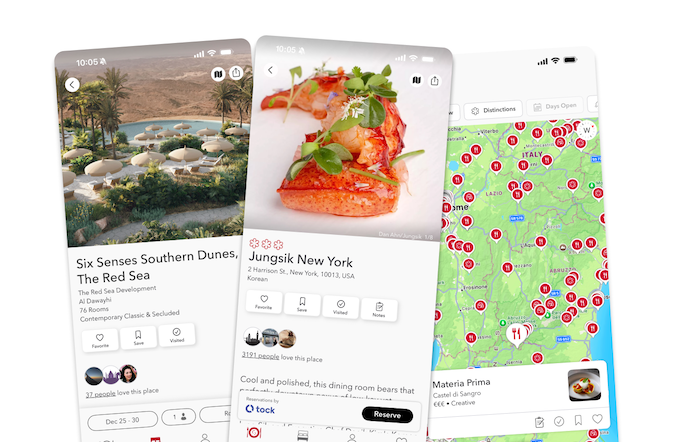Whether you're visiting during the olive oil harvest or peak tomato season, you’ll find Florence’s food scene is actually less about steak and more about ingredients of the moment. Many MICHELIN-recommended restaurants will use these ingredients in imaginative interpretations of traditional dishes, while at more casual restaurants, look for the produce-heavy options in the antipasti (appetizer) or contorni (sides) sections.
Spring
The markets are brimming with asparagus, fava beans, shucked sweet peas, strawberries, heirloom peaches, leeks and wild garlic. Fava beans with pecorino is a particularly loved appetizer, and restaurants like Cucina (with a daily rotating menu based on what’s available) play with this classic combo.. Their savory tarts — such as fava beans, ricotta and edible spring flowers like wisteria — are strongly tied to Florentine culinary traditions.

Summer
The star of Italian summer eating is undoubtedly the tomato and Florence has its own variety: wrinkle-rich costoluti. Panzanella salads are in their prime as juicy tomatoes soak up leftover bread, complemented with sweet heirloom Tropea onions, basil and crunchy cucumbers. Nugolo, with its focus on sustainability, features some of the owners’ 200+ cultivated heirloom tomato varieties on menu items like chitarra pasta in house-jarred pomarola (tomato sauce cooked with aromatics). Cibrèo offers a hyper-seasonal tomato and basil budino (a savory flan-like pudding).

Seafood is the preferred protein of Florentines during warmer months, especially plates of pesce crudo (raw fish dressed with citrus, oil and seasoning). These often include gambero rosso (red prawn), amberjack and local tuna, andseasonal catches like palamita (bonito), swordfish, squid and branzino. Seafood may also be dressed up exquisitely with local bottarga (cured fish roe), caviar, or specialty fruits, or folded into fresh pasta and brightened up with summer aromatics and hyperregional garlic leek aglione sauce.

Fall
Cooler temperatures usher in porcini mushrooms, wine grapes, olio nuovo (new olive oil), quince, pomegranate and chestnuts. This might be Tuscany’s seasonal strong suit and most representative of its cuisine. Wine grapes are the true sign of fall as bakeries and dessert menus serve up schiacciata con l’uva, a sticky wine grape flatbread pie. Zucca (squash) in many forms start to overflow the city’s markets and menus. At contemporary restaurants like Konnubio, fall flavors will impress travelers (especially vegetarians) with gnocchi-like crispy zucca with sage and porcini.
This is the time to sniff out a sagra, especially one involving olio nuovo, which usually start to pop up in October. Olio nuovo sagre are held around Tuscany with varying menus — but expect any to include fettunta, a quintessential fall staple of grilled Tuscan bread rubbed with garlic and dripping in neon green-gold olio nuovo. Think of it as a Tuscan bruschetta.
Porcini and truffles are the cream of the sagra crop, as you’ll likely find plates of fresh pasta with shaved truffles at a fraction of what you’d pay at restaurants in the city, with some cultural immersion to boot. While San Miniato near Pisa holds an annual truffle fair, near Florence there’s a truffle sagra (Sagra del Tartufo Girone) held in September that’s less commercial and truer to the sagra culture.

Winter
Tuscany is fortunate with mild winters that allow a long growing season for field produce, especially cruciferous and root vegetables. Resilient greens like chard and kale are common in Tuscan cooking, like the soups listed in What to Eat in Florence and Where. This is the time for colorful bitter chicories, citrus fruits and persimmons. Tuscans also take carciofi (artichokes) seriously. They're done in countless ways (look for carciofi ritti, stuffed and braised, like at Del Fagioli) but one of the most Florentine ways involves eating them quartered and swirled into a farmstead egg frittata like at Trattoria Cibreino.
Cruciferous vegetables like cavolo (cabbage) are also winter stars, especially in legume-based soups — and they are so representative of Tuscan eating that locals say “che cavolo,” meaning “what a cabbage,” as a replacement for stronger swear words. Winter is also the time for castagnaccio, a sweet chestnut flour cake baked with raisins, nuts and rosemary. To help digest some of this heavier winter fare, stop off at the bar housed in Locale to taste a riff on the Negroni using a house-made artichoke infused soda.

Hero Image: Vegetables and grocery stalls in the streets of Florence © TerryJ/iStock






